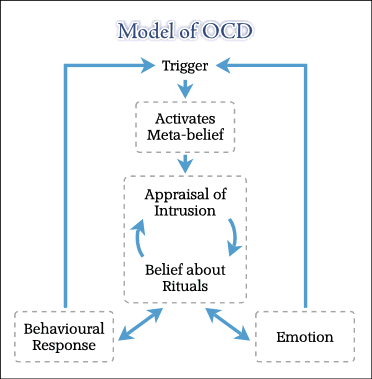
Tel: 0800 078 7712
Home | Common Problems | Therapies | Therapy Format | Common Myths | Consultancy | Contact | Links
Expert; Individual; Formulation driven CBT
Copyright © 2022, A.S.T. Consultancy.
Obsessive Compulsive Disorder
Obsessional Compulsive Disorder (OCD) is regarded as a common anxiety disorder estimated to affect between 0.05 and 3% of the general population. In its more severe forms it is an extremely debilitating disorder affecting the sufferer in all aspects of their life.
The age of onset varies but is generally between 6 – 15 years for males and 20 – 29 years for females.
Obsessions are persistent intrusive thoughts, impulses, ideas or images which are perceived as inappropriate and cause marked anxiety, distress and/or discomfort.
These obsessions are 'ego-
The most common obsessions are related to repetitive intrusive thoughts regarding contamination of self or others, doubts, aggressive and/or horrific impulses and sexual thoughts and/or imagery.
These intrusions are not simply excessive worries about real-
Formulation
The Cognitive Behavioural Therapist will work with the sufferer to discover the maintaining factors of the presenting problem and collaboratively construct an idiosyncratic formulation of the problem.
Following this an individual treatment regimen will be constructed and guided by the formulation.
Treatment
Depending on the presentation and formulation, a number of techniques will be employed,
such as the well-
this does not become assimilated into the repertoire of safety behaviours), Thought Action/Event Diffusion and Behavioural Experimentation.
Those who improve with treatment are typically able to maintain their gains at follow ups of between 1 to 5 years.

Adrian Wells, 1997 -
